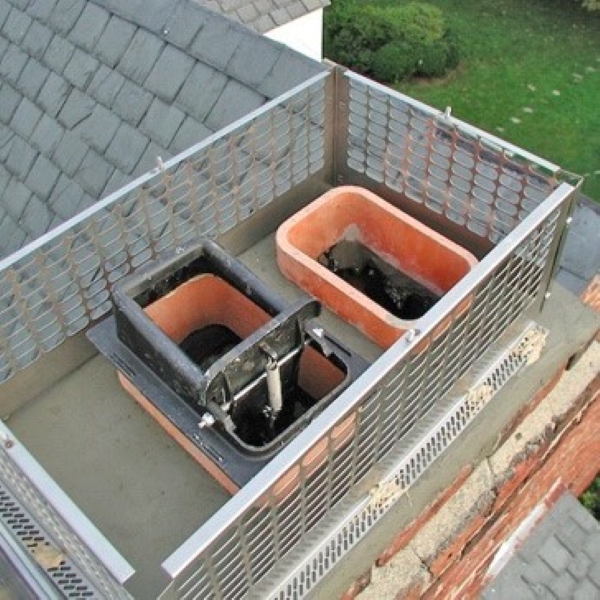Now that summer is here, it’s a good idea to close the fireplace until the colder weather returns. Closing the fireplace for the season has many benefits. First, it will help prevent the conditioned air in your home from escaping through the chimney saving money on cooling costs. Second, it will keep the rain out of the chimney that can damage interior masonry and cause foul odors in your home. Third, closing the fireplace also prevents small animals and pests from climbing in the flue through a damaged or missing chimney cap. However, there are a few routine maintenance tasks that should be done when closing your wood-burning or gas fireplace for the summer.
 Schedule a Chimney Inspection
Schedule a Chimney Inspection
Your chimney and fireplace need to be inspected annually, and getting it done during the summer will avoid the fall and winter rush when chimney sweeps are busiest. A chimney inspection is necessary to ensure your gas or wood-burning fireplace is safe to operate and is not a health or safety hazard. The chimney sweep will visually inspect the chimney, vents, and attached heating appliances. In addition, the chimney sweep will check ceramic logs, burner, connections, and fittings for gas fireplace owners. The chimney sweep will also check for creosote build-up and obstructions. Any deficiencies found during the inspection, like spalling brick, cracks in the chimney crown, water leaks, or other damages, can be repaired while the fireplace is not in use.
Chimney Cleaning
It’s also a good idea to clean the chimney before closing the fireplace for the summer. Small animals like birds, raccoons, and squirrels may have been hiding out in the chimney. Also, strong winds can blow leaves, twigs, and other debris into the vent. The decaying organic matter, along with the warmer temperatures and humidity, can cause foul odors to permeate your home. It can also attract pests.
Moreover, the creosote accumulating in the chimney throughout the winter hardens into a thick, tarry, and flammable substance that becomes extremely difficult to remove. It also contributes to foul odors. A professional chimney sweep that is certified by the Chimney Safety Institute of America (CSIA) has the training and professional equipment necessary to safely clean the chimney and your attached heating appliances, including gas and wood-burning fireplaces, wood stoves, furnaces, and inserts, per National Fire Protection Association (NFPA) industry standards.
Turn off the Pilot Light
Gas fireplace owners should also turn off the pilot light before closing the damper for the summer. Turning off the pilot light will reduce energy costs and wear and tear when you’re not using the fireplace. It is a simple process. First, locate the pilot knob and turn it to the “off” position. Also, turn the gas shutoff valve to the “off” position.
 Closing the Damper
Closing the Damper
Most fireplaces have a damper that is installed in the chimney’s throat above the firebox. It is typically operated by a lever or a rotating screw-type rod. Close the damper by lifting and pulling the handle down or turning the rotating rod to the right. Some fireplaces have a top-mount damper that is installed at the top of the chimney. It is closed by pulling the chain and attaching it to the hook in the firebox. After closing the damper, visually check to ensure it has an airtight seal when shut. An airtight damper seal is essential for reducing energy costs and keeping water out of the chimney and firebox.
If you need help closing the damper or turning off the pilot light, contact the professional chimney sweeps at Fluesbrothers. We’ll be glad to schedule an appointment throughout our Kansas City Metro service area.



